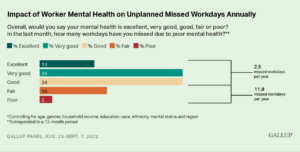 With many larger employers and organizations, there are typically written rules, standards, and people in place to help guide employees in their efforts to increase or improve their productivity. When you're working largely on your own as a self-employed individual or in a small business however, you may find yourself left to your own devices when it comes to reviewing and evaluating these standards. This can be difficult, but if you learn how to conduct self-audits, it can make a significant difference in the way you work, your productivity levels, and how you make efficient use of your time.
With many larger employers and organizations, there are typically written rules, standards, and people in place to help guide employees in their efforts to increase or improve their productivity. When you're working largely on your own as a self-employed individual or in a small business however, you may find yourself left to your own devices when it comes to reviewing and evaluating these standards. This can be difficult, but if you learn how to conduct self-audits, it can make a significant difference in the way you work, your productivity levels, and how you make efficient use of your time.
Timing Issues
Knowing exactly how long it takes to complete various tasks required of my work is a great way to look for areas in which to improve the processes involved. Taking just a day or two and listing your various activities on a time sheet as you accomplish them and noting the times associated with those activities can act as sort of a great awakening so to speak.
For the self-employed, small business owner, or for those who work from home especially, learning where and how you utilize (or in some cases waste) your time can sometimes come as a shock. From time wasted perusing the Internet, to time spent performing menial tasks when you should be focused on the big picture, your level of productivity can hinge upon making the best available use of your time.
Calculating an Hourly Rate
Once you've found out how you spend your time and just how much of it is actually spent working, you can determine your hourly rate. For freelancers especially, this can be helpful because it can help determine what you should be charging for your labor. This could be another aspect of a self-audit in which there are a couple of surprises, and frankly, a bit of disappointment lurking. When you start to see just how much work you are doing for a particular hourly rate, it can be somewhat depressing. For me, I try to use this as a motivator to cut time loss and find further ways to increase my efficiency and raise my productivity.
Noting When and Where I'm Working
After determining how much of my time is spent and upon what, I then consider the places or areas in which I am spending that time. This can be another huge factor that plays into productivity. As I make my time sheet, I also list where I am working and anything that is going on that might distract or detract from my productivity. Gauging your work locations can help you determine where you are most productive.
Pinpointing What Works
As I look back over my time sheet, I can see whether the television was on, if my son (since I am a stay-at-home dad) is awake or asleep, if it was a weekend day when my wife was at home, whether I'm working in the office, living room, bedroom, etc., and similar environmental factors. This helps me determine how these factors play into my productivity levels and pinpoint where my strongest work areas and times are.
Trying New Things
Once a productivity self-audit is complete, it tends to lead me toward trying new things when it comes to how and where I work. Sometimes these new productivity enhancers pay off in spades, other times, not so much. And sometimes, while you recognize the fact that certain environmental factors (things like a child or children at home while you're working or the phone ringing with client questions or orders) are distracters, they are things that you may not be able to eliminate from your day.
Still, being open to trying new techniques could help increase your productivity and if nothing else, at least identify things that definitely don't work for you.
Re-evaluating
I find that it's not a bad idea to re-evaluate and conduct a new productivity self-audit every several months or when a new environmental factor impacts your work schedule or environment.
As times, people and technology change, so do our work habits and productivity. From the time of year to a child being born, and from a change in business levels to a new office, different marketing strategy, or similar change, there are all type of situations that can affect our lives and work. Finding out on a regular basis who, where or what affects the level of this work and in what ways can make a huge difference in just how productive you are.





